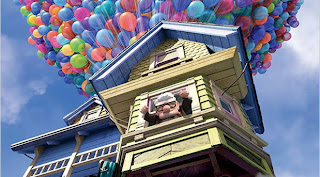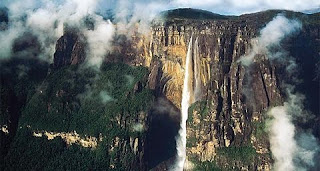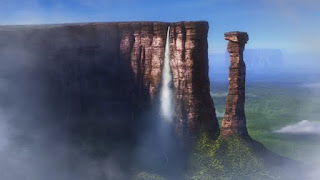I apologise for the lack of any posts the past month, here at last are the notes from Pixar's Animex presentation by Andrew Shmidt. The focus of the event was the most recent feature release "Up" which Andrew had animated on. Andrew Shmidt is a senior animator at Pixar and has 20 years of industry experience, initially a 2D animator, Andrew began his career in 1990 at Amblimation Studios working on features such as Fievel Goes West and Balto. In 1996 he moved to Los Angeles and worked with Dreamworks on projects such as the Prince of Egypt and The Iron Giant. In 2000, Schmidt moved to San Francisco and joined Pixar Animation Studios where he has worked on Monsters, Inc., Finding Nemo, The Incredibles, Ratatouille, Wall-e, Up and Toy Story 3. He has also animated on various Pixar short films, including supervising animation for Partly Cloudy.
There are a few Rules of Reliability that Pixar follow when developing a feature:
- Tell a compelling story that keeps the audience engaged.
- Populate the story with memorable characters.
- Put characters in a believable environment.
Up is set in the Tepui mountains of South America and the film boasts a fictional exaggerated waterfall called Paradise falls inspired by the Angel Falls. The Tepui were visited by lead members of the creative team where their personal experiences and first hand perspective of the environment could aid the projects artistic portrayal. The world of the Tepui held many alien shaped rocks and plants that directly influenced the design of the world and characters in the film.
Once concept art is in great abundance the story is of the main focus and digital storyboards are used to pitch the progress of the narrative. Andrew brought up a breakdown of the story driven process that is Pixar's production pipeline:
- Idea Development, collaborative collection of thoughts gathered for the project across the creative team.
- Concept Art, traditional skills such as storytelling, drawing, painting and sculpture are used to communicate ideas, keep things informal and encourage experimentation. (story determines what to put in the film and technology responds)
- World, Character, Story, The story process is moved forward by designs for the world and characters of the film. The world has it's own rules, that limit what the character can do, building unique worlds is at the heart of animation. Characters have things they want and need, that push the limits of the world, they should feel like they live beyond the frame of the film.
- Design, Everything is design, cycles of planning and implementation are alternated, Pixar avoid "waterfall design" where all design is complete before implementation begins.
- Timeline & Departments, A four year design process, planning for all four of those years with Story, Art and Editorial. technological Implementation for the last 2 years involving-
- Editorial
- Modelling, Articulation, Shading, Digital Painting
- Layout, Set Dressing, Animation, Lighting
- Rendering
6. Story, Art & Editorial, 3 departments are the focus of design-
- Story creates storyboards, drawings that are a comic strip version of the film's important moments.
- Art creates inspirational images, character and set designs, colourscripts and lighting pastels.
- Editorial creates story reels, rough drafts of the film made up of storyboard drawings, scratch dialogue and borrowed music.
7. Implementation - Objects, Everything in the film,
- The shape and surface are created separately for every object.
- Modelling and Articulation deals with shape and how the shape moves (primarily 3D skills). ---M----Articulation or rigging provides the hinges in the model allowing it to be positioned.
- Shading and Painting works on surface (primarily 2D skills)
8. Shading & Digital Painting,
- shaders produced to provide surface deformations and colour
- digital paintings used to rough up textures and add naturalistic detail.
9. Shots (Layout, Set Dressing, Lighting), .
- Layouts set up the basic blocking for character and camera movement, informed by the storyboards and story reel.
- Set Dressing makes sure each shot is well framed by set and props
- Lighting lights the shot to focus the action and to help create mood, informed by concept art, colourscripts.
10. Animation, the rigged character models are put into motion.
- Animators break down the performance into poses
- Each pose attempts to capture the character's thoughts and feelings.
11. Rendering, Final step of Implementation
- the film consists of roughly 120,000+ rendered frames
- layers include- Key lights, shadows, occlusion, character, reflection, irradience, beauty layer
- all layers are applied to a final composite.
I hope this pipeline has helped shed some light on the Pixar production process, the presentation had a great deal of information to get down on paper so I shall continue with Andrew Schmidt's notes in my next post which will shed more light on the technical detail and inner workings of the studio.





